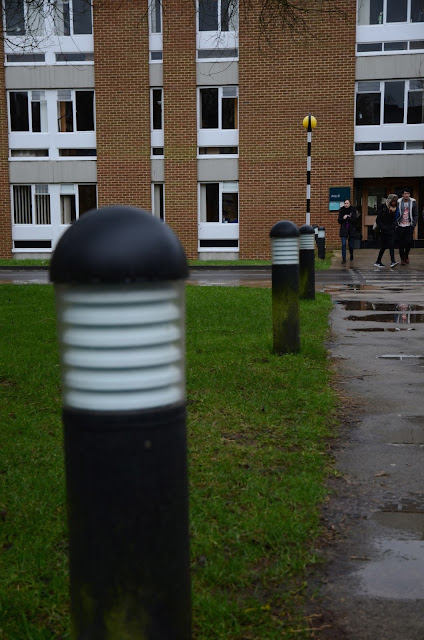''Depth of field is the amount of distance between the nearest and farthest objects that appear in acceptably sharp focus in a photograph.'' (http://www.mir.com.my/rb/photography/fototech/htmls/depth.html)
So what this basically means, is that depth of field refers to what is either inside or outside the sharp area of a picture.
We normally distinguish low and high depth of field, which both depend on the aperture (F number).
To create a low depth of field and thus emphasize the main part of the picture you have to use a very large aperture (ex.: f/2.5)
In contrast to this, you have to use a very low F number (ex.: f/18) if you want to put the focus on a larger area within the picture and thus create a high depth of field.
As we had to try and experiment with the depth of field today, here are some of my examples taken with different F numbers :
I'm not really satisfied with this picture of the bicycles, because I'm not sure if it has any kind of depth of field in it.
At first I thought it would be an example of a high depth of field, because you can see quite a lot of the bikes , even in the background. But then again, the two saddles in the foreground aren't a hundred percent sharp, so I was kind of confused by this shot and I feel like it is difficult to classify into an example of any kind of depth of field.
In these two pictures, you can see how I tried to use the same set, but put the focus on different things, each time using a low depth of field.
On the one above, I tried to emphasize the lamp in the foreground of the picture, and thus the building and the other lamps in the back are pretty blurred.
On the one below, on the other hand, I focused on the building and the people in the background, and although you can still recognize the lamp in the foreground it is less clear, than in the first picture.
Same as in the pictures with the lamp, I tried to emphasize different things in both photographs.
In the first one I tried to put the focus on the grass in the foreground, whereas in the second one, the grass becomes kind of unrecognizable and thus the building in the background becomes more important.
(This last one is particularly interesting because it is also an example of slow shutter speed, but I am going to analyze this in detail in another post)
Contact Sheet










No comments:
Post a Comment